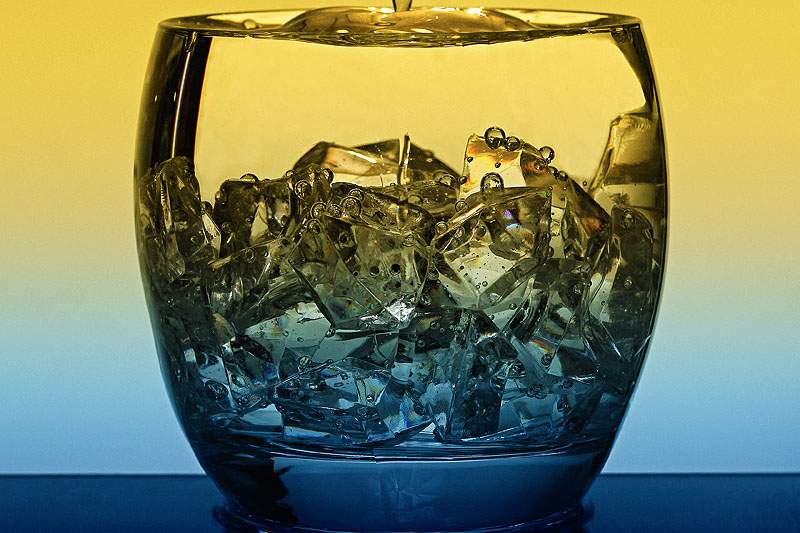
The problem: cloudy ice cubes, with unsightly bubbles in the center, even though you started with clear water and a clean ice tray.
The answer: start with hot water, not cold.
The reason: hot water holds less dissolved air than cold water. Those bubbles in the center of an ice cube come from air dissolved in the water.
Bubbles In The Center
Bubbles usually form at the center because ice cubes usually freeze from the outside. The top, bottom, and sides of the cube freeze first, leaving a liquid water center.
As the cube continues to freeze, dissolved air is forced into the liquid center. Air can't freeze at these temperatures, so when the liquid center of the ice cube finally freezes, the air comes out of solution and forms bubbles in the ice.
Less Dissolved Air
Hot water has less dissolved air to begin with, so it makes fewer bubbles when it freezes. To convince yourself hot water holds less dissolved air than cold water, think of what happens when you heat water in a saucepan on the stove.
Long before the water gets hot enough to boil, tiny bubbles form on the bottom of the pan. Those tiny bubbles are air coming out of solution as the water warms up. The same thing happens in your hot water heater.
Or, think of an aquarium: if the temperature is too warm, fish die, partly because the warm water holds too little oxygen (there are some fish who have adapted a lack of oxygen). Getting back to ice cubes: if some dissolved air has already been removed from water by heating, less air will be left to emerge as bubbles when you freeze the water in an ice tray.
So, the secret to making clear ice cubes is to start with hot water.
Read More:
Ronald A. Delorenzo, Problem Solving in General Chemistry (1981), p. 240.









